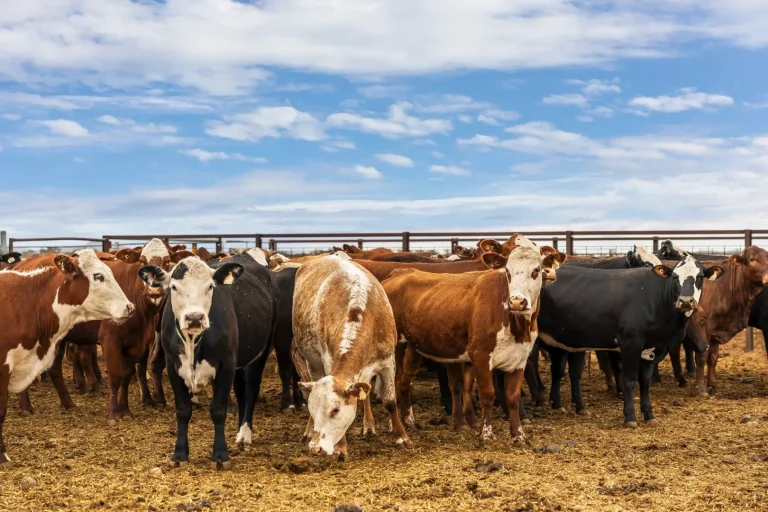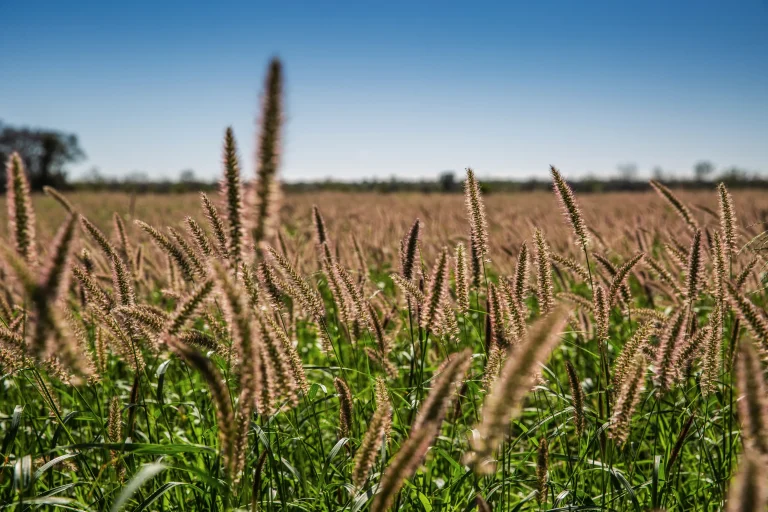Guidelines for Investing in Queensland’s Dairy Farming Industry
Developing comprehensive guidelines for investing in Queensland’s dairy farming industry requires deep understanding of the unique characteristics, opportunities, and challenges that define dairy property investment across the state’s diverse agricultural regions. Queensland’s dairy sector, concentrated primarily in the southeast coastal areas and the fertile Darling Downs, presents compelling investment opportunities for those equipped with specialized knowledge of dairy farming operations, infrastructure requirements, and market dynamics.
At Agribusiness Horizons, we recognize that dairy farming represents one of Australia’s most intensive and technically sophisticated agricultural sectors, requiring substantial capital investment, specialized management expertise, and comprehensive understanding of complex operational requirements. Our experience in dairy property transactions across Queensland enables us to provide essential guidance for investors considering entry into this dynamic sector. Whether you’re evaluating established dairy operations in the Scenic Rim or considering development of new dairy facilities on suitable agricultural land, understanding the Queensland dairy farm investment strategy becomes crucial for long-term success.
This detailed guide examines the critical factors that influence dairy farming investment success in Queensland, from property selection and infrastructure assessment through to operational management and long-term sustainability planning. We’ll address the unique regulatory environment, technological requirements, and market considerations that distinguish dairy investments from other agricultural property categories while providing practical frameworks for investment evaluation and risk management.
Queensland’s Dairy Industry Investment Landscape
Queensland’s dairy farming sector operates within a sophisticated agricultural ecosystem that combines favorable climate conditions, established processing infrastructure, and proximity to significant domestic markets. The state’s dairy regions benefit from reliable rainfall patterns, quality soils, and temperature ranges that support productive pasture systems and intensive dairy operations throughout most of the year.
The industry structure reflects a combination of family-owned operations and larger commercial enterprises, creating diverse dairy farming investment opportunities Queensland across different scale and management models. Understanding this structural diversity becomes essential for identifying investment opportunities that align with individual objectives, management capacity, and risk tolerance levels.
Processing infrastructure concentration in key dairy regions provides market access and competitive pricing advantages for properties positioned within established supply chains. Properties with access to multiple processing options often demonstrate enhanced flexibility and reduced market risk compared to those with limited buyer alternatives.
Geographic specialization has created distinct dairy farming clusters where infrastructure, services, and expertise support efficient operations and reduced transaction costs. These established dairy regions typically offer advantages in terms of professional services availability, equipment suppliers, and specialized knowledge networks that benefit dairy farming investments.
Property Selection and Infrastructure Assessment
Land Suitability and Climate Considerations
Dairy farming property investment requires comprehensive assessment of land characteristics, including soil quality, drainage capacity, topography, and climate suitability for intensive pastoral systems. Queensland’s dairy regions offer varied conditions that affect productivity potential, development costs, and operational efficiency across different property types.
Soil assessment encompasses fertility levels, drainage characteristics, and structural capacity to support intensive grazing systems and heavy machinery operations. Properties with naturally fertile soils and good drainage typically require lower development costs and demonstrate superior long-term productivity compared to those requiring substantial soil improvement programs.
Water resource evaluation represents a critical component of dairy property assessment, encompassing both water rights and infrastructure requirements for livestock consumption, irrigation systems, and dairy facility operations. Queensland dairy operations typically require substantial water access for both animal consumption and facility operations, making water security essential for operational viability.
Climate analysis addresses temperature patterns, rainfall distribution, and seasonal variations that affect pasture growth, feed production, and operational efficiency throughout the year. Properties in regions with more consistent climate patterns often demonstrate reduced seasonal volatility and enhanced operational predictability.
Dairy Infrastructure and Technology Assessment
Modern dairy operations require sophisticated infrastructure including milking facilities, feed storage systems, waste management facilities, and livestock housing that represent substantial capital investments. Successful investing in Australian dairy agriculture QLD requires comprehensive infrastructure assessment to understand development costs and operational capabilities.
Milking parlor evaluation encompasses capacity, efficiency, technology integration, and compliance with food safety regulations that affect operational costs and productivity potential. Properties with modern, efficient milking systems typically demonstrate superior labor efficiency and milk quality outcomes compared to those requiring substantial upgrades.
Feed storage and handling facilities significantly influence operational efficiency and feed cost management, particularly during seasonal periods when pasture quality may be limited. Properties with adequate storage capacity and efficient handling systems often demonstrate reduced feed costs and enhanced operational flexibility.
Waste management systems must comply with environmental regulations while providing efficient treatment and disposal of dairy operation byproducts. Properties with compliant and efficient waste management systems reduce regulatory risks and operational costs while supporting sustainable farming practices.
Financial Analysis and Investment Evaluation Framework
| Investment Metric | Assessment Focus | Key Considerations | Strategic Implications |
|---|---|---|---|
| Property Valuation | Land and infrastructure value | Replacement cost, market comparables | Capital investment requirements |
| Operational Cash Flow | Annual profitability assessment | Milk income, feed costs, labor expenses | Debt servicing capacity |
| Development Potential | Expansion and improvement opportunities | Herd size increases, technology upgrades | Future value enhancement |
| Market Position | Competitive advantages | Processing access, quality premiums | Sustainability and growth potential |
| Risk Profile | Operational and market risks | Weather, disease, price volatility | Portfolio balance and mitigation |
Comprehensive financial modeling for dairy farming investments requires sophisticated analysis that accounts for the complex interplay between milk prices, feed costs, labor requirements, and capital investment needs across multiple production scenarios and market conditions.
Operational Requirements and Management Considerations
Herd Management and Genetics
Dairy farming success depends heavily on herd quality, breeding programs, and animal health management that require specialized expertise and ongoing investment. Properties with established herds and proven genetic programs often provide operational advantages and reduced development timeframes compared to those requiring complete herd establishment.
Breeding program evaluation encompasses genetic quality, productivity records, and improvement potential that affect long-term production capabilities and asset values. Herds with documented genetics and performance records typically command premium valuations and provide enhanced production predictability.
Animal health management systems, including veterinary programs, vaccination schedules, and disease prevention protocols, significantly influence operational costs and productivity outcomes. Properties with comprehensive health management systems often demonstrate reduced veterinary costs and superior production consistency.
Feed management and nutrition programs directly impact milk production, animal health, and operational profitability across dairy enterprises. Understanding feed system efficiency and nutritional program effectiveness becomes essential for accurate investment evaluation and operational planning.
Labor and Management Requirements
Dairy operations require skilled labor and professional management capabilities that may be challenging to source in some regional areas. Effective Queensland dairy property investment planning must account for labor availability and management requirements to ensure operational success and accurate cost projections.
Management system evaluation encompasses operational procedures, record-keeping systems, and performance monitoring capabilities that support efficient operations and regulatory compliance. Properties with sophisticated management systems often demonstrate superior operational efficiency and reduced management complexity.
Training and skill development requirements affect ongoing operational costs and management effectiveness, particularly for investors without extensive dairy farming experience. Understanding training needs and availability helps assess operational feasibility and management cost projections.
Succession planning considerations may affect property availability and transaction structures, particularly for family-owned operations seeking external investment or ownership transition. Understanding succession dynamics helps identify acquisition opportunities and appropriate transaction approaches.
Risk Assessment and Mitigation Strategies
Market and Price Risk Management
Dairy farming investments face multiple risk categories including milk price volatility, feed cost fluctuations, and operational challenges that require comprehensive risk management strategies. Understanding these risks enables development of appropriate mitigation approaches and realistic return projections.
Milk price volatility affects revenue predictability and cash flow stability, requiring strategic approaches to price risk management including forward contracting, price insurance, or processor relationships that provide price stability. Properties with access to stable pricing arrangements often demonstrate reduced financial volatility.
Feed cost management represents a significant operational risk, particularly during periods of drought or high grain prices that increase production costs. Properties with feed production capability or access to diverse feed sources often demonstrate enhanced cost stability and reduced input price risks.
Disease risk management encompasses biosecurity protocols, insurance coverage, and contingency planning that protect against catastrophic losses from disease outbreaks. Properties with comprehensive biosecurity systems often demonstrate reduced risk profiles and enhanced operational sustainability.
Environmental and Regulatory Compliance
Environmental regulations affecting dairy operations continue evolving, requiring ongoing compliance investments and operational adjustments that affect profitability and risk profiles. Understanding regulatory trends helps anticipate future compliance costs and operational requirements.
Water quality management encompasses both input water quality and effluent management that must comply with environmental protection requirements. Properties with comprehensive water management systems often demonstrate reduced regulatory risks and enhanced operational sustainability.
Nutrient management planning addresses fertilizer application, waste utilization, and soil health maintenance that supports sustainable production while meeting environmental obligations. Properties with advanced nutrient management systems often achieve operational efficiencies while reducing environmental compliance risks.
Key risk mitigation strategies include:
- Diversification across multiple dairy properties or agricultural sectors to reduce concentration risk
- Insurance coverage for livestock, facilities, and business interruption to protect against catastrophic losses
- Professional management agreements or partnerships to access specialized expertise and reduce operational risks
- Financial management including debt structuring and cash flow planning to maintain operational flexibility
Regulatory Environment and Compliance Requirements
Queensland’s dairy farming operations must comply with complex regulatory frameworks encompassing food safety, animal welfare, environmental protection, and land use planning requirements that affect operational costs and investment risks. Understanding these compliance obligations becomes essential for accurate investment evaluation and operational planning.
Food safety regulations require comprehensive quality assurance systems, facility standards, and record-keeping protocols that ensure product safety and market access. Properties with established food safety systems often demonstrate reduced compliance costs and enhanced market positioning.
Animal welfare standards affect housing requirements, handling practices, and management protocols that influence facility design and operational procedures. Compliance with animal welfare requirements ensures market access and reduces regulatory risks associated with dairy operations.
Environmental compliance encompasses water management, waste disposal, and land use practices that must meet state and local government requirements. Properties with comprehensive environmental management systems often demonstrate reduced compliance costs and regulatory risks.
Planning and development regulations affect facility construction, expansion possibilities, and operational restrictions that may influence property development potential and long-term value. Understanding planning constraints helps assess development opportunities and regulatory compliance requirements.
Agribusiness Horizons’ Specialized Dairy Investment Services
Our comprehensive approach to dairy farming investment guidance combines extensive experience in Queensland’s agricultural markets with specialized knowledge of dairy operations, infrastructure requirements, and industry dynamics. We provide end-to-end support for dairy property investment, from initial market analysis through to operational transition and ongoing performance monitoring.
Our dairy property valuation services utilize sophisticated modeling techniques that account for herd values, infrastructure replacement costs, and operational cash flow potential to provide accurate investment assessments. We combine comparable transaction analysis with detailed operational modeling to deliver valuations that reflect current market conditions and future potential.
We coordinate comprehensive due diligence processes involving dairy consultants, veterinary specialists, infrastructure engineers, and regulatory experts to provide thorough property assessment and risk identification. This collaborative approach ensures that all critical factors receive professional evaluation and potential issues are identified before investment commitment.
Our strategic advisory services help investors develop acquisition strategies that align with investment objectives, risk tolerance, and management capabilities. We provide market intelligence, operational guidance, and strategic positioning advice that enhances investment success rates and operational outcomes.
Our transaction management services coordinate complex settlement processes involving livestock valuations, infrastructure warranties, and operational transition planning. Professional transaction coordination ensures smooth ownership transfer while minimizing operational disruption and preserving asset values.
Technology Integration and Innovation Opportunities
Modern dairy operations benefit significantly from technology integration that improves operational efficiency, reduces labor requirements, and enhances production monitoring capabilities. Comprehensive dairy farm acquisition guidelines Australia emphasize understanding technology trends and adoption opportunities for competitive positioning in Queensland’s evolving dairy sector.
Automation systems for milking, feeding, and herd management create operational efficiencies that reduce labor costs while improving consistency and monitoring capabilities. Properties with advanced automation systems often demonstrate superior operational efficiency and reduced management complexity.
Data management and monitoring systems enable comprehensive tracking of production metrics, animal health indicators, and operational efficiency measures that support optimization strategies and regulatory compliance. Properties with sophisticated monitoring systems provide enhanced management transparency and performance optimization capabilities.
Precision agriculture applications including pasture management, fertilizer application, and feed optimization create opportunities for improved resource utilization and enhanced sustainability. Properties positioned for precision agriculture adoption often demonstrate superior long-term efficiency and environmental stewardship.
Key technology investment areas include:
- Automated milking systems and robotic technologies that reduce labor costs while improving milking efficiency
- Herd monitoring systems using sensors and data analytics for health management and breeding optimization
- Feed management systems that optimize nutrition delivery and reduce waste through precision feeding
- Environmental monitoring technologies for compliance tracking and sustainability reporting
Genetic improvement programs utilizing advanced breeding technologies and genomic selection enable herd improvement acceleration and productivity enhancement over traditional breeding approaches. Properties with access to advanced genetic technologies often achieve faster herd improvement and enhanced production potential.
Market Access and Processing Relationships
Processing facility relationships significantly influence operational efficiency, pricing outcomes, and strategic flexibility for dairy farming operations. Understanding processing market dynamics and relationship management becomes essential for optimizing investment returns and operational success.
Quality premium programs reward superior milk quality through enhanced pricing arrangements that can significantly impact operational profitability. Properties positioned to achieve quality premiums often demonstrate enhanced revenue potential and competitive advantages.
Contract arrangements with processors provide price stability and market access certainty that reduces revenue volatility and supports financial planning. Understanding contract terms and processor relationships helps assess revenue predictability and market positioning advantages.
Geographic positioning relative to processing facilities affects transportation costs, milk quality maintenance, and operational flexibility. Properties with favorable processing access often demonstrate reduced operational costs and enhanced competitive positioning.
Alternative market opportunities including specialty products, direct sales, or value-adding enterprises may provide revenue diversification and premium positioning opportunities. Understanding alternative market potential helps assess value enhancement possibilities and strategic development options.
Future Industry Trends and Strategic Positioning
Queensland’s dairy industry continues evolving in response to consumer preferences, technological advancement, and environmental considerations that create new opportunities and challenges for investors. Comprehensive guidelines for investing in Queensland’s dairy farming industry must consider these emerging trends to position investments for long-term success and competitive advantage.
Sustainability requirements and environmental stewardship expectations increasingly influence market access, pricing premiums, and operational practices. Properties demonstrating environmental leadership often attract premium valuations and enhanced market positioning from environmentally conscious consumers and investors.
Consumer preference trends toward organic production, grass-fed systems, and local sourcing create opportunities for premium positioning and market differentiation. Understanding consumer trends helps identify market opportunities and positioning strategies that enhance profitability potential.
Technology adoption continues accelerating across dairy operations, creating productivity advantages and operational efficiencies that influence competitive dynamics. Properties positioned for technology integration often demonstrate superior long-term performance and market appeal.
Climate adaptation strategies become increasingly important as weather patterns continue changing and operational challenges intensify. Properties with climate-resilient infrastructure and adaptive management systems often outperform conventional operations during challenging periods.
Conclusion
Successfully implementing guidelines for investing in Queensland’s dairy farming industry requires comprehensive understanding of operational complexity, market dynamics, and regulatory requirements that distinguish dairy investments from other agricultural property categories. The intensive nature of dairy operations creates both opportunities for enhanced returns and requirements for specialized expertise and management capabilities.
The opportunities presented by Queensland’s dairy sector are substantial for investors equipped with appropriate knowledge, management capabilities, and financial resources. However, realizing these opportunities requires sophisticated planning, comprehensive due diligence, and ongoing professional management support to navigate operational complexity and market challenges.
Professional guidance becomes essential for successful dairy farming investment, providing access to specialized expertise, market intelligence, and operational support that optimize investment outcomes while managing inherent risks. The investment in comprehensive professional services typically generates substantial returns through improved decision-making and operational efficiency.
As you consider dairy farming investment opportunities, reflect on these critical questions: Do you have access to the specialized management expertise required for successful dairy operations? How well do you understand the regulatory environment and compliance requirements affecting Queensland dairy farms? What strategies will you implement to manage the operational risks and market volatility inherent in dairy farming investments?
For expert guidance on Queensland dairy property investment planning, contact Agribusiness Horizons today. Our specialized dairy investment services provide comprehensive analysis and strategic support designed to optimize investment outcomes while managing complexity and risk. Reach out to Rawdon Briggs at +61 428 651 144 or visit our strategic advisory services page to schedule a consultation and learn how our dairy industry expertise can enhance your investment success in Queensland’s dynamic dairy sector.



